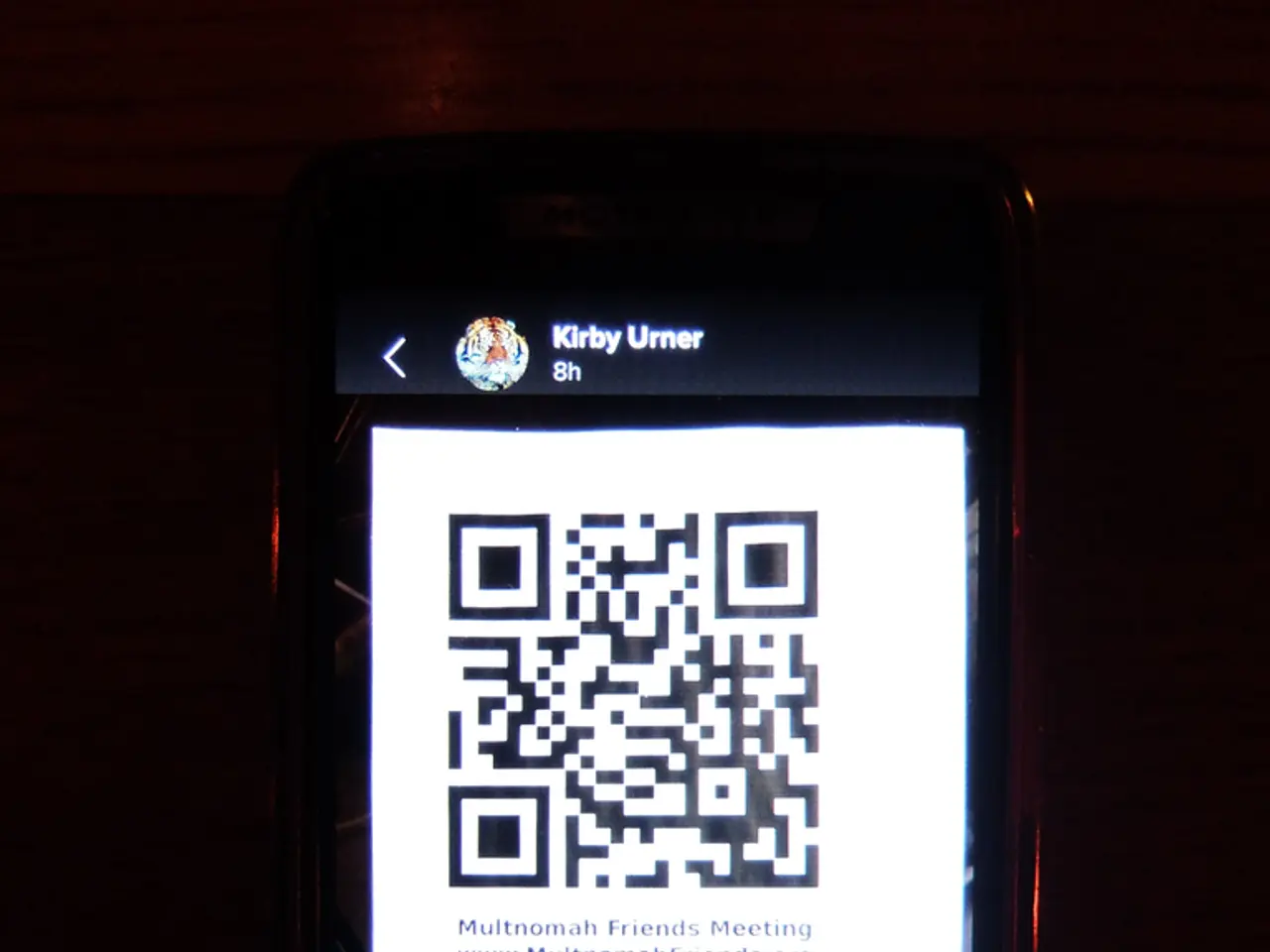Unveiling the Secret Risks Behind Quick Response (QR) Codes in Advanced Packaging!
As the use of QR codes in supply chain management continues to grow, it's essential to implement strategies that ensure data integrity and protect against potential risks. Here are some best practices for secure QR code usage:
Verifying QR Code Integrity
To ensure that QR codes are safe to scan, consider using trusted scanning applications or investing in technologies that verify the integrity of QR codes before scanning. This can help detect and flag potentially malicious codes. Additionally, implementing screening processes for vendors and partners can prevent the insertion of malicious QR codes in smart packaging.
Secure Packaging Designs
Collaborating with packaging designers to incorporate security features, such as tamper-evident seals or holograms, can make detecting tampering or unauthorized alterations easier. Embedding unique identifiers into QR codes can also enhance traceability and security.
QR Code Best Practices for Readability and Functionality
For optimal scanning performance, use high-contrast color combinations, place QR codes on flat, visible surfaces, and ensure they are large enough (at least one inch by one inch) for quick and easy scanning with mobile devices.
Integration with Existing Systems
Integrate QR codes with existing systems like ERP or inventory management platforms to streamline processes and reduce human error. Use tracking capabilities to monitor QR code scans and analyze data for enhanced supply chain management.
Employee Training and Awareness
Educate employees and stakeholders about the risks associated with QR codes, including warning signs, best practices, and consequences of falling victim to scams or cyberattacks. Keep stakeholders informed about security protocols and the importance of QR code verification.
By implementing these best practices, supply chain managers can effectively use QR codes while minimizing the risks of cyber threats and enhancing overall security and efficiency.
In addition, it's crucial to consider the increased use of QR codes in everyday life, particularly in the wake of the pandemic. For example, ExpressVPN recently found an increase in QR code fraud, particularly on restaurant menus, with 53 percent of U.S. restaurants having switched to QR code menus. This underscores the importance of promoting the adoption of secure packaging designs and QR code verification to enhance the security of smart packaging in the supply chain industry.
Finally, it's important to share information about the risks associated with QR codes to reduce the vulnerability of individuals to fraudulent schemes or compromised personal information. By staying informed and taking necessary precautions, we can all help ensure the safe and effective use of QR codes in our daily lives.
References:
[1] "Securing QR Codes: Best Practices for Secure QR Code Usage." Barcode.com. Accessed March 28, 2023. https://www.barcode.com/resources/articles/securing-qr-codes-best-practices-for-secure-qr-code-usage.
[2] "QR Code Best Practices: Design, Printing, and Scanning." QR Code Generator. Accessed March 28, 2023. https://www.qrcode-generator.de/en/about/qr-code-best-practices.
[3] "QR Codes in Supply Chain Management." Barcode.com. Accessed March 28, 2023. https://www.barcode.com/resources/articles/qr-codes-in-supply-chain-management.
- In light of the growth of QR codes in global trade and the industry, it's vital to integrate QR code scanning applications with cybersecurity measures to safeguard against potential risks.
- To ensure the efficiency of supply chain management, it's advisable to integrate QR codes with finance and inventory management systems for seamless data analysis and process optimization.
- As QR codes become increasingly common in everyday life, it's crucial for individuals to understand the importance of cybersecurity in supply chain management to protect personal information and avoid scams.
- To maintain competitive advantage in the supply chain management sector, companies should consider implementing advanced technologies like AI and machine learning for more secure QR code usage and inventory management.







